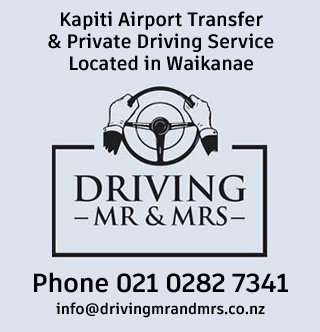The New Zealand Transport Agency has released its Funding Assistance Rates (FAR) which determines how central government land transport co-funding will be distributed over the next nine years.
The consequences of this are huge for Kāpiti with the current state highway becoming a ‘local road’ on the completion of the Expressway. This will make it the Kāpiti Coast Council’s road and the costs of maintaining it could provide a tipping point for the severely indebted KCDC.
Local Government New Zealand (LGNZ) President Lawrence Yule thanked the Transport Agency’s extensive engagement with councils across New Zealand on the changes, and welcomes the clarity this announcement brings on the available share of funding for local and regional roads. The Transport Agency has worked closely with the sector on this issue. Not all members will be happy with the decisions but the balance struck appears generally fair given the funding pool available. The Agency’s role is to allocate the funding pool provided by Government and the Government’s role is to set the size of the funding pool.
“These decisions provide some funding clarity for communities. This is important with local government currently carrying the risk and cost for around 88 per cent of the country’s road network,” Mr Yule says.
“Roading is a major cost for communities in the 2012/13 year councils invested $1.23 billion in new roading infrastructure, maintenance, renewal and operations. Even so, councils currently only receive around 46 per cent of road funding from central government sources; the remainder is locally funded.”
For LGNZ the bigger issue is the quantum of the total funding pool that will be made available under the Government’s Policy Statement on Land Transport Funding. This is expected to be announced by the Government soon and we are looking for Government to provide appropriate funding for all areas of New Zealand. This is a particularly important issue for rural and provincial New Zealand which produces the bulk of our country’s export commodities and where the road network is a critical path to market.
Mr Yule says LGNZ has been lobbying the Government to carefully consider the size of its funding pool for land transport and to make sure that allocation of funding for local roads across New Zealand is set at the right level.
“It is vital that local and regional roads receive adequate investment to be functional, safe and help to realise economic benefits for all New Zealanders,” Mr Yule says.
The Transport Agency has advised that the overall co-investment rate for all local transport programmes combined will be 53 per cent. Some councils will receive a higher or lower FAR based on their relative ability to fund their share. A standard rate of 51 per cent has been set, with a top rate of 75 per cent for mainland councils and 85 per cent for the Chatham Islands.
The Government Policy Statement sets out the Government’s priorities from the National Land Transport Fund over the next ten years and the quantum of funding that local government will receive for local and regional roads. This also sets out how funding is allocated between activities such as road safety policing, State highways, local roads and public transport.






